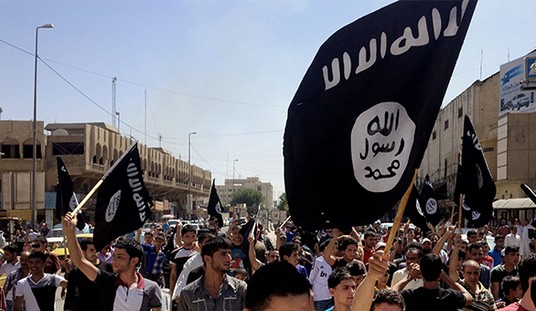
KIRYAT SHMONA, ISRAEL — The Israel/Lebanon war created hundreds of thousands of refugees on each side of the border, but that’s where proportion ends. Israel has a real army and a real air force and can inflict real damage on its enemies. Hezbollah, on the other hand, is only strong enough to terrorize people.
The so-called Party of God can menace, bully, and sabotage Lebanon. (They are especially good at the latter.) Hassan Nasrallah’s “martyrs” can terrorize Israel. But they cannot repel an invading army. They can only harass that army and kill a miniscule percentage of its soldiers and dent it by one tenth of one percent.
After most foreign journalists packed up and left as soon as the bangbang stopped, I drove to Hezbollah’s most targeted city of Kiryat Shmona to do a little post-war analysis of what had just happened. It looks surprisingly intact from a distance, and even up close the damage is less severe than what I thought it would be.

I expected to see at least one destroyed house. There may be a destroyed house in there somewhere, but I drove all over and couldn’t find one.
Katyusha rockets are pipsqueakers. They don’t feel like pipsqueakers when they’re flying in your direction. But they are. They can’t be aimed worth a damn, and they’ll only do serious damage if they ignite something else after impact, like the gas tank of a car. They have almost no military value at all unless they are fired in barrages at a reasonably close range. From a distance they can only be counted on to break a few things almost at random in the general direction they’re aimed.
They do break a few things, especially because Hezbollah is clever enough to pack them tight with ball bearings. Kiryat Shmona looks like a city that recently suffered street fights between roving militias with automatic weapons.

Katyusha shrapnel kills people who aren’t wearing body armor, and wounds those who are. No one wants to be hit with this stuff. But if the side of your building is hit, you can call a repair guy and have it taken care of in one day. It might take a few days if the windows are broken. Either way, Katyushas do quite a lot of damage to people and relatively little damage to infrastructure and buildings.


Throwing high-speed ball bearings at random around an urban area is a great way to terrorize people and get them to hide in their shelters or seek refuge somewhere else. You can empty entire cities this way, and that’s exactly what Hezbollah did. No Palestinian terrorist group had ever been able to accomplish so much. But forget trying to use Katyushas against an army, especially against a properly outfitted and trained Western army. While Northern Israel’s civilian population retreated to the south, the military surged forward straight into Lebanon.
I can say from personal experience that Katyushas really do frighten civilians. I drove through Kiryat Shmona several times (fast) while it was under bombardment. But I didn’t dare stick around. The city was Hezbollah’s favorite target even while it has no military value at all. They couldn’t hit anything in particular in there, but the city is large enough and close enough to the border that it’s easy to hit something and scare everyone out.

You can’t destroy a city this way, but you can make it uninhabitable for a while.
The worst damage I could find was where a Katyusha hit the roof of a car port. A parked van was torched , the kitchen window was blown in by shrapnel, and a portion of the side of the house was damaged. Anyone washing the dishes when that thing hit would have been killed.



There is a lot of talk in the media and the blogosphere about Hezbollah’s targets in Israel. Some insist that Hezbollah does too aim its Katyushas at the Israeli military. The “proof” is that 12 soldiers were killed by a rocket just before I arrived on the border.
Here’s the thing, though. Hezbollah hit a little of everything in Northern Israel: houses, trees, streams, grass, apartments, roads, vineyards, and cows. Thousands of rockets crashed and sprayed shrapnel inside their shooting gallery. The odds that none of the rockets would hit a single IDF soldier were microscopic. Hezbollah couldn’t have achieved zero Israeli military casualties no matter how hard they tried unless they didn’t fire those rockets at all.
I was far safer on military bases, in open fields, and on tiny kibbutzes than in cities during Hezbollah’s terror war. Katyushas are nearly useless against an army but are devastatingly effective as terrorist weapons against civilian population centers even as they cause relatively light damage. Shrapnel may not hurt your apartment building too bad, but it will tear you to pieces if you’re in the way.

Rockets rained down on Kiryat Shmona almost constantly. There were no soldiers, no tanks, no artillery cannons, no bases, nothing of military value in that city at all. None of the journalists I met wanted to linger there for very long. But we were all over the army bases because our odds of being hit by a rocket were merely random, the same as if we were out among cows in the farmland. Haifa, which is away from the border, was hit more often than bases that are right next to the border and therefore easier targets.

The odds of being hit in Kiryat Shmona were fantastically higher than the odds of being hit anywhere else. Our lives depended on getting this right. There is no room for ideology or taking sides when you’ll die if you get it wrong.

If Hezbollah really did the best they could to avoid killing civilians with their inaccurate rockets (as their apologists claim) I would have set up shop in Kiryat Shmona. But the situation was exactly reversed. The exception was the town of Metulla, and the reason for that, presumably, is because it is immediately surrounded on three sides by Lebanon. With that exception in mind, the claim that civilian areas were safer places than military areas is terrorist propaganda.

What happened here doesn’t bode well for the future if Hezbollah, Syria, and Iran want to go another round. And it looks like they do want to rack up another “victory.” It’s so easy for Syria and Iran in particular when Lebanon absorbs all the punishment for them.
Missile war may be replacing terrorist war. It’s more effective than using hijackers and suicide bombers. Only missile war caused hundreds of thousands of Israelis to flee.
This war was a transition, the testing of a new doctrine. It’s a disaster for Israel, but in the end it will be an even bigger disaster for those who think it’s a terrific idea.
I don’t know about some of the unhinged Lebanese Hezbollah supporters, but I wouldn’t want to be anywhere near Lebanon if ten Iranian-made Zelzal missiles crash into the sides of Tel Aviv apartments and skyscrapers every hour.
War is coming again, and it’s coming like Christmas. It will not resemble the Middle East wars we are used to.
Post-script: Please hit the Pay Pal link and help pay travel expenses for independent non-corporate writing. I am not a rich person, and I can’t do this without you.
[paypal_tipjar /]
If you would like to donate money for travel expenses and you don’t want to use Pay Pal, you can send a check or money order to:
Michael Totten
P.O. Box 312
Portland, OR 97207-0312
Many thanks in advance.
Terror War

Advertisement








Join the conversation as a VIP Member